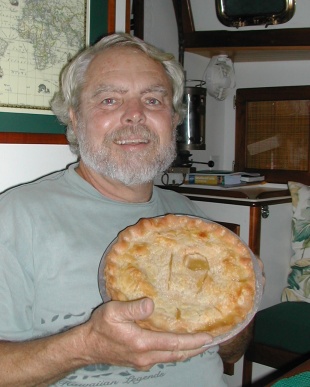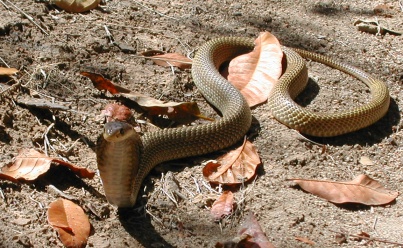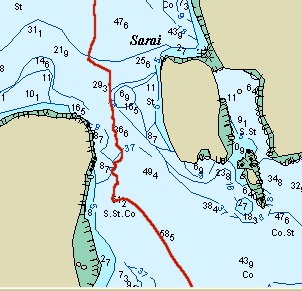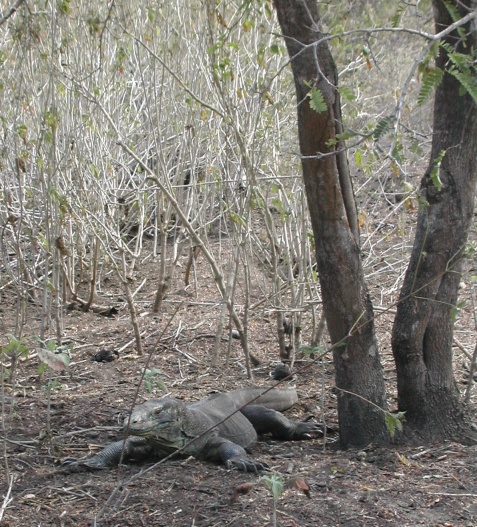KOMODO RINCA
We had a 65 mile sail from Sumba to Komodo/Rinca, so we left Sumba before sunup. We picked our way through about 30 local fishing boats as we left the harbor, and we were well offshore by sunrise.
We had a very nice and uneventful sail (no fish), and we made landfall at Rinca. We arrived at the southern end of Rinca shortly before 4:00 pm local time.
Geologically, Komodo and Rinca are closely related to the larger Flores Island to the east. There are also many small islands surrounding these. Komodo is the furthest west, and it is separated from Rinca by Selat Linta (Linta Channel). Rinca, between Komodo and Flores, is separated from Flores by Selat Molo (Molo Channel).
Selats Linta and Molo are both infamous for their extreme tidal streams – sometimes reaching nine knots – but tide times and heights are unavailable for both channels. Supposedly one can estimate the tides from calculating the local upper and lower transit of the moon. We were not willing to brave the very narrow neck of Selat Molo, but we thought we would do ok in Selat Linta. But first our time on the southern end of Rinca.

The birthday boy & his birthday pie
The island of Rinca has only one village on its northeastern tip and a ranger station staffed by approximately six rangers. It is otherwise uninhabited – at least by humans. Rinca is home to deer, buffalo, monkeys, wild pigs, and the Komodo dragon.
The southern end of Rinca is a deep bay with Nusa Kode (Kode Island) in the middle of it. A deep narrow (1/4 mile) channel runs between them. The shores are more rock than sandy beach.
On the beaches we saw deer, pigs, monkeys, and dragons. There were countless thousands of monkeys. They were so numerous that they looked like ants on an ant hill. We saw eight or ten dragons leisurely roaming on the beaches. We did not see buffalo. We also saw numerous eagles including one with copper-colored wing feathers – spectacular!
The rocky shores continued underwater in the richest reef we have ever seen. The reefs were exploding with soft and hard corals, sponges, fish, and invertebrates. We were talking about spending a bit of time there, and then the weather turned.
Our winds were steady in the mid-20s and gusting in the high-30s for a few days. The surface was choppy, and it was overall uncomfortable. We stayed because we wanted to do more diving there. But the weather outlasted us, and we left eight days after arriving. Even though we did not get to do all we had hoped while there, we will always remember this as one of the more magical places we have found.
We motorsailed 15 miles northward along Rinca’s very dramatic western coastline. The seas and winds were big (steady 30 knots), and the current was irregular –it would change back and forth between a north and south set. We were relieved to arrive at a placid Lehok Ginggo (Ginggo Bay).

Cobra Snake

This was our course against more than 7 1/2 knots countercurrent
We saw a few pigs and birds on the beach, but no dragons. And although the reefs looked interesting from the dinghy, we opted to wait till the following day to dive (we hadn’t slept enough during the bumpy weather on the south shore).
The next day was Bud’s birthday, and we made a good day of it. Nita cooked what she could with her dwindling provisions and made a birthday pie (didn’t have enough eggs to make the traditional rum cake). And we went for a cold dive that was somewhat disappointing. But, all in all, Bud enjoyed his birthday. We stayed that night then headed further north the following morning.
We were headed north through a moderately narrow area of Selat Linta. We had watched the tides for a few days, and we knew when to expect high and low water. We also calculated the upper transit of the moon and extrapolated tidal stream data from a table designed for the next channel to the west (no data available for Selat Linta). It was all we had to go on.
As we entered the channel, it looked and felt like a washing machine. We discussed bailing out, but it didn’t look much better anywhere around us, so we decided to push ahead. The tidal stream was against us, and it continued to increase. At one point we were doing 7.68 knots through the water, and our speed over ground was zero. We had more than 7 ½ knots of countercurrent! We were being pushed in all directions except the direction we were heading. Bud was determined, and we made it through a few hours later.
We continued to experience countercurrent, but it was nothing like it had been through the neck of the channel. We worked our way across the top of the island, and we arrived at the anchorage near the ranger station – Loh Buaya (Buaya Bay) – more than five hours after we began our 19 mile journey.
Loh Buaya was where Nita was finally going to face one of her big fears – big lizards. Or more correctly, Komodo dragons – ten foot carnivorous lizards that will kill and eat you if given the opportunity. She agreed to go ashore to see the dragons up-close-and-personal with Bud and a ranger as a guide/protector. (This was a major life event for one whom is scared of 2”geckos.)
We quickly found a few 6-footers. We were both appalled by how ugly they are. If there is an uglier creature on earth, we don’t care to see it.
We hiked up a hill to where the ranger believed we would find a few big dragons, and we came across a cobra snake. The ranger antagonized the snake with a stick, and the snake assumed the expected defensive posture – flared hood, hissing, poised to strike. This was a bit more than Nita bargained for.
We did find a few big dragons – seven to eight feet in length. One got a bit testy with us, but we both survived to scurry down the hill and back to the safety of Passage.
As we talked about the experience, we felt somewhat like we did after standing on the rim of the erupting volcano – Mt. Yasur. We are glad we did it, but we don’t care to do it again. What an experience!
Rinca was a wild experience for us – ranging from the magnificent reefs on the southern end to the Komodo dragons on the northern end. And with 7 ½ knots of countercurrent in between. But more than a few of our basic provisions were running low, so we needed to move on to a town where we could buy a few things. We will definitely never forget Rinca.
We went to the westernmost end of the island of Flores and spent four days in Labuhan Bajo. Then we returned to the islands in the northern Komodo-Rinca area.

Female komodo dragon – bigger around than a tree!
When we left Labuhan Bajo, we went north to the Sabolan islands. They were very nice, but the only anchorage was just too tight. It lacked any room to swing if the winds changed, so we decided to go on to the Sabayor islands.
The Sabayor islands, north of Rinca, were nice even if not as attractive as the Sabolan islands, but we could not find decent anchorage there either. It is too deep to anchor, and the three existing moorings were occupied. One of the boats was friends of ours, and they offered for us to tie up behind them. Again, that could have been a problem if the winds shifted, so we carried on to the Gili Lawa islands.
The Gili Lawa islands are north of Komodo. We ended up on the north shore of Pulau Gili Lawa Laut about 100 meters from where we were diving just two days earlier. Although the tidal stream rips through this area, the little bay was calm and quiet when we arrived. Unfortunately, a moderate amount of roll developed through the night. However, it abated during the next day, so we decided to stay a second night.
We explored a bit in the dinghy, and the clear water and reefs were beautiful. We thought about snorkeling, but it was late in the day, so we put it off. Then the roll resumed that night, and we agreed that we would leave the following morning.
We slogged our way through more countercurrent – this time a relatively mild 2 ½ knots – and arrived in the isolated south anchorage of Gili Banta by midday. The water was clear and beautiful, and one large eagle was the only sign of life above water. Three more boats arrived later in the day – two with existing friends and one with about-to-become new friends. Greg and Debra on Sonrisa invited the small fleet over for sundowners, and we had a wonderful time. We really have made some wonderful friends along our travels.
Unfortunately, we needed to head for Bali. We had a few issues to tend to that would require the bright lights and big city, so we left Gili Banta after only one night and headed for the north coast of Sumbawa about 50 miles away. That would be one of our few stops as we headed for Bali.